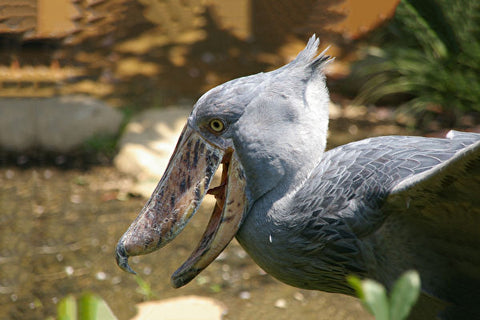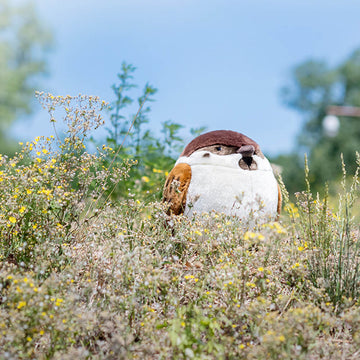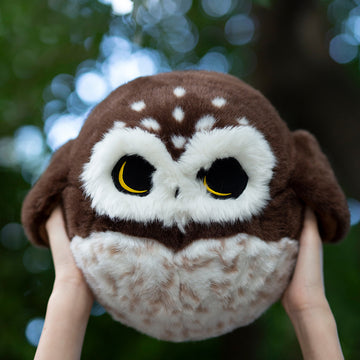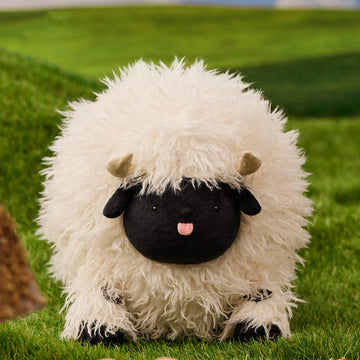Facts About Shoebill, Can I keep a shoebill as a pet?

The shoebill (Balaeniceps rex) also known as the whalebill, whale-headed stork or shoe-billed stork, is a very large long-legged wading bird. It derives its name from its enormous shoe-shaped bill. It has a somewhat stork-like overall form and has previously been classified with the storks in the order Ciconiiformes based on this morphology. However, genetic evidence places it with pelicans and herons in the Pelecaniformes. The adult is mainly grey while the juveniles are more brown. It lives in tropical East Africa in large swamps from South Sudan to Zambia.
What is special about the shoebills?
What makes the aptly named shoebill so unique is its foot-long bill that resembles a Dutch clog. Tan with brown splotches, it's five inches wide and has sharp edges and a sharp hook on the end. Its specialized bill allows the shoebill to grab large prey, including lungfish, tilapia, eels, and snakes.
Can a shoebill fly?
They may be big, but they can fly if they want to.
Granted, shoebills don't fly very far or very often, but flying is no mean feat considering they can grow up to 1.5m tall and weigh up to 7kg!
How rare is it to see a shoebill?
Seeing the critically endangered shoebill stork in the wild is a rare opportunity. The birds are confined to relatively small and remote regions of east Africa. There are opportunities to see these birds in captivity - a few zoos have small populations of three or four shoebills.
How many shoebills are left?
The Shoebill can be found in freshwater swamps in Africa from South Sudan to Zambia. The shoebill is classified as Vulnerable, meaning the species is at high risk of becoming extinct. Estimates suggest there are only between 3,300 and 5,300 mature individuals left in the wild, and populations are on the decline.
Do shoebills hurt humans?
People are not at risk from shoebills, and there are no records of attacks on humans by these “prehistoric throwback” wading birds. In fact, the opposite is more likely to be true. Shoebills are a vulnerable species with few natural predators.
Are there shoebills in captivity?
Shoebill storks are not native to and do not occur in the United States in the wild. However, there are a few in captivity at zoos. The only place in the US where people can see shoebill storks is Zoo Tampa - in Tampa, Florida.
Can you own a shoebill stoerk as a pet?
Shoebill Stork is on the endangered species list, making it illegal to own one. According to The International Union for the Conservation of Nature, there are only an estimated 3,300 to 5,300 adult Shoebills remaining in the world.
You cannot own a shoebill, but there are people who care for them at wildlife sanctuaries. It's a huge commitment - a full time job actually.
Of course, if you want a shoebill as a pet, our stuffed shoebill plush toy can be the perfect substitute!
Check Our Product: Stuffed Shoebill Plush Toy







